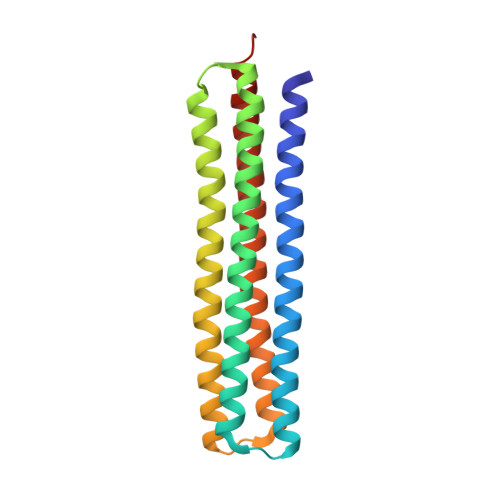High Thermodynamic Stability of Parametrically Designed Helical Bundles
Huang, P., Oberdorfer, G., Xu, C., Pei, X.Y., Nannenga, B.L., Rogers, J.M., Dimaio, F., Gonen, T., Luisi, B., Baker, D.(2014) Science 346: 481
- PubMed: 25342806
- DOI: https://doi.org/10.1126/science.1257481
- Primary Citation of Related Structures:
4TQL, 4UOS, 4UOT - PubMed Abstract:
We describe a procedure for designing proteins with backbones produced by varying the parameters in the Crick coiled coil-generating equations. Combinatorial design calculations identify low-energy sequences for alternative helix supercoil arrangements, and the helices in the lowest-energy arrangements are connected by loop building. We design an antiparallel monomeric untwisted three-helix bundle with 80-residue helices, an antiparallel monomeric right-handed four-helix bundle, and a pentameric parallel left-handed five-helix bundle. The designed proteins are extremely stable (extrapolated ΔGfold > 60 kilocalories per mole), and their crystal structures are close to those of the design models with nearly identical core packing between the helices. The approach enables the custom design of hyperstable proteins with fine-tuned geometries for a wide range of applications.
- Department of Biochemistry, University of Washington, Seattle, WA 98195, USA.
Organizational Affiliation:
















